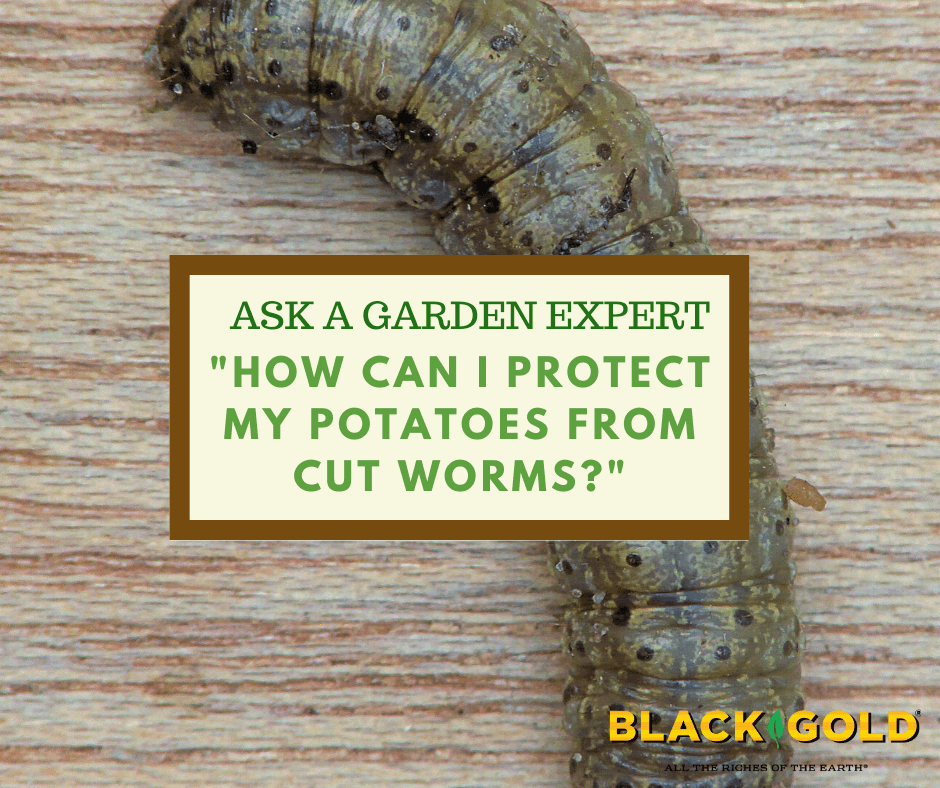
“What is the best way to organically protect potatoes from the fat, grey larvae that wiped out my potatoes last year? I forget the bug’s name, but I looked it up last year. My organic gardening book said to use bran bits and molasses.” Question from Kit of Fairless Hills, Pennsylvania
Answer: I think your pest is the cutworm. Cutworms (Agrotis spp.) are the destructive caterpillars of nocturnal moths, and there are many kinds that attack practically every vegetable crop, including potatoes. Cutworms are fat, gray and curl into a C-shape when disturbed. They tend to feed along the ground at night and are called “cut” worms because of their ability to cut off seedlings and small stems. They will also eat into tubers, roots, and fruits. Several cultural steps and products can help control them.
Cultural Steps to Stop Cutworms
Weeds are a cutworm’s first food, so keep your beds weed-free. Tilling has also be shown to smother and kill cutworms early in the season, so consider tilling your beds under before planting your potatoes. Placing plastic collars around the base of plants has also been shown to ward off cutworms. And, sprinkling a layer of food-grade diatomaceous earth around the bases of plants has also been shown to help. Diatomaceous earth has sharp points that we can’t feel, but these cut into the flesh of soft-bodied caterpillars.
Hand-picking also helps. Cutworms tend to hang out below plants in shady spots during the day. Look for them, and smash or drown them in a glass of water for easy removal.
Pesticides to Stop Cutworms
The use of molasses and bran traps appears to be one old-time method gardeners have used to kill cutworms. The theory is that cutworms are lured to the mix and trapped and/or damaged by the thick molasses. I cannot testify to this method, but I can advocate the use of BT (Bacillus thuringiensis), which is an all-natural insecticide approved for organic gardening. The beauty of BT is that it only damages harmful insects that chew on your plants. Bees and other beneficials are not impacted by BT.
Take some or all of these steps, and your cutworm troubles should be over.
Happy gardening,
Jessie Keith
Black Gold Horticulturist
